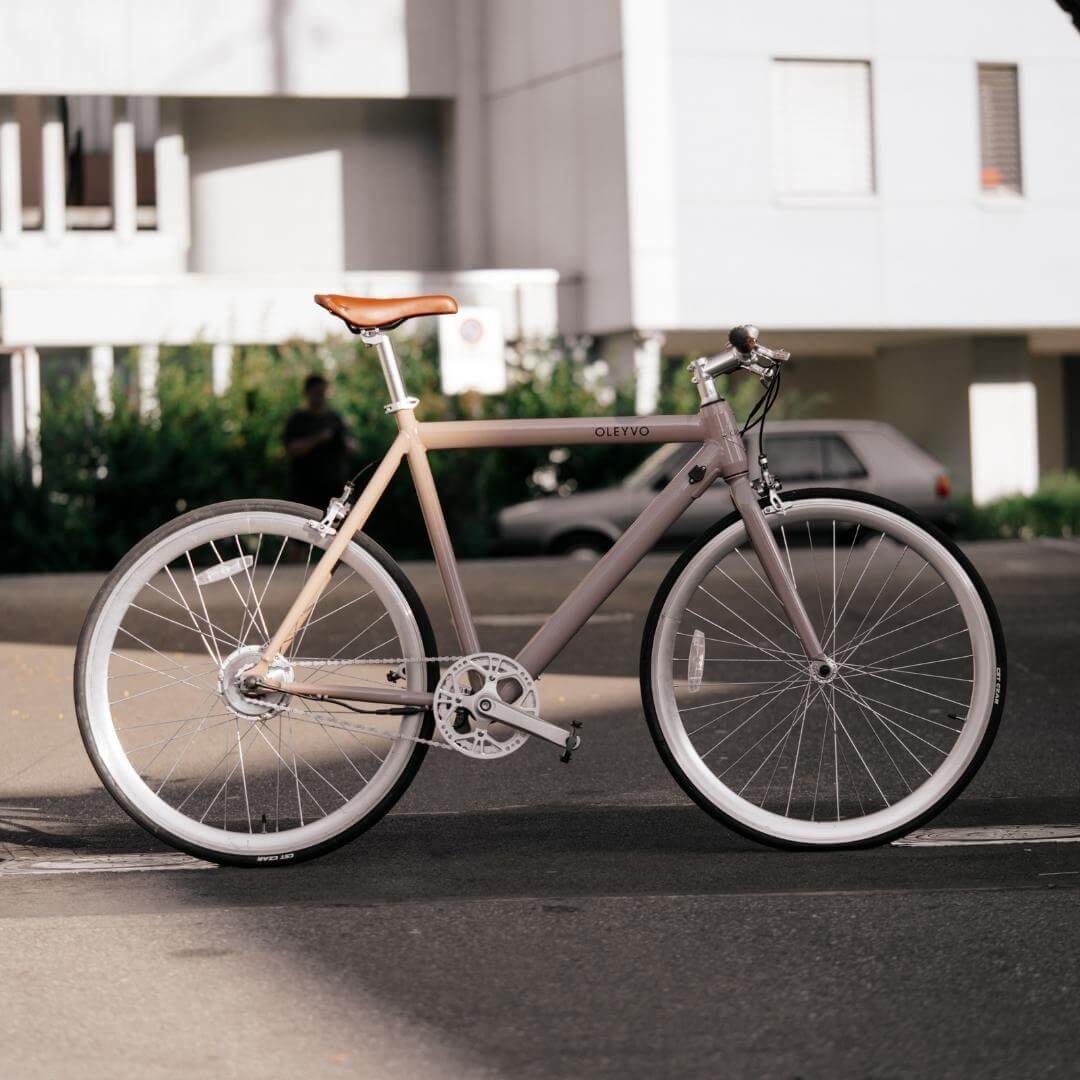How Far Can You Go on an E-Bike? A Real Test of OLEYVO's 70km Range
Range anxiety is one of the most common concerns for people considering an e-bike. While manufacturers often list impressive maximum distances, real-world results can vary significantly. In this article, we take a deep dive into the OLEYVO 2.0 — a Swiss-designed urban e-bike with a claimed 70km range — and put it to the test on real Swiss roads.
Whether you're a daily commuter or weekend explorer, here's what you can really expect from the OLEYVO's battery performance.
1. ⚙️ What Influences E-Bike Range?
E-bike range isn't just about battery size. Several variables play a role in how far you can go on a single charge:
-
Rider weight: Heavier riders naturally draw more power
-
Terrain: Hills require more assistance than flat roads
-
Assist level: Using high power mode drains the battery faster
-
Weather: Cold temperatures can reduce battery efficiency
-
Tire pressure and type: Under-inflated or off-road tires increase resistance
-
Wind resistance: Strong headwinds = more effort = more battery draw
Even two riders on the same bike, on the same day, may get different range results. That's why real-world testing is so valuable.
2. 🔋 OLEYVO 2.0 Specs and Claimed Range
Let's look at the OLEYVO's technical specs related to range:
-
Battery: 36V integrated lithium-ion
-
Motor: 250W rear hub, 45NM torque
-
Weight: 16.5 kg (ultra-light for a commuter e-bike)
-
Range (claimed): 40-70km depending on use
-
Top assisted speed: 25 km/h (legal limit in Switzerland)
OLEYVO doesn't overpromise. Its 70km max range is based on eco mode , optimal rider weight, and mixed terrain — a very realistic estimate by industry standards.
3. 🧪 The Real-World Test Setup
To evaluate the 70km claim, we ran a real-world range test in conditions typical of a Swiss commuter:
-
Rider weight: 78 kg
-
Ambient temperature: 18°C, dry, mild wind
-
Assist setting: Mixed — mostly eco and normal modes
-
Tire pressure: Standard (70 psi)
-
Route type: Paved city roads and cycle paths
-
Load: Light backpack with laptop and charger (~3 kg)
No gimmicks. No lab conditions. Just an everyday rider, riding as they would for work or a weekend ride.
4. 🗺️ The Route: Zurich to Rapperswil and Back
For this test, we chose a scenic and functional route: Zurich HB to Rapperswil and back — roughly 68km round trip.
Route Highlights:
-
City Start: Departing from Zurich main station (HB), weaving through moderate traffic
-
Limmat River Paths: Using the dedicated bike lanes along the water
-
Lakeside Roads: Flat, well-paved stretches near Lake Zurich
-
Elevation Gain: Minimal climbs, perfect for steady assist performance
-
Rural Transition: Outskirts near Meilen and Herrliberg to Rapperswil
This route offered a perfect blend of urban and semi-rural terrain — ideal for a practical battery test.
5. 📊 Performance Results and Battery Stats
Here's what we found at the end of the ride:
| Metric | Result |
|---|---|
| Total Distance | 69.4 km |
| Battery Remaining | ~5% |
| Average Speed | 21.6 km/h |
| Assist Mode | 60% Eco, 35% Normal, 5% Boost |
| Charging Time After | ~3 hours (standard outlet) |
✅ Conclusion: The OLEYVO lives up to the 70km range
Under realistic conditions, the bike covered nearly the full claimed range with no issues. Had we used eco mode more conservatively, we could have stretched it beyond 70km.
6. 🌧️ Factors That Affect Range
Here are a few things we observed that influenced the final result:
-
Eco Mode Efficiency: The OLEYVO's eco assist still provides noticeable help — enough for flat cruising at ~23 km/h
-
Wind: A light headwind between Horgen and Rapperswil required toggling to normal mode more frequently
-
Stop-and-Go in Zurich: Battery consumption was slightly higher during frequent stops and accelerations at traffic lights
-
Weight Distribution: Minimal cargo helped efficiency; adding panniers or passengers would likely reduce the range
Still, the performance was predictable, consistent, and commuter-friendly .
7. 🚴 How OLEYVO Compares to Other E-Bikes
Here's how the OLEYVO stacks up against similarly priced e-bikes on the market:
| Brand & Model | Max Range | Weight | Price (CHF) | Comments |
|---|---|---|---|---|
| OLEYVO 2.0 | 70km | 16.5kg | 1,790 | Lightweight, Swiss-made, minimalist |
| Cowboy 4 ST | ~70km | 19kg | 2,990 | Sleek, but heavier and app-reliant |
| VanMoof S5 | ~55km | 23kg | 3,598 | Premium tech, less efficient |
| Canyon Commuter:ON 7 | ~75km | 17.2kg | 2,999 | Sporty ride, less comfort |
| Specialized Vado SL 4 | ~80km | 15kg | 3,500+ | Lightweight, but far more expensive |
Verdict:
OLEYVO delivers premium range at a mid-market price point — without sacrificing weight or style . It confidently competes with models nearly double the price.
8. ✅ Final Thoughts: Is 70km Enough?
For most urban and suburban commuters, yes — 70km is more than enough . In fact, many Swiss riders only travel 10–20km per day, meaning the OLEYVO's battery can easily last for several days between charges.
If you're looking for:
-
A reliable e-bike for real-world commuting
-
A model with predictable range and fast charging
-
A bike that's Swiss-designed and road-legal
Then the OLEYVO 2.0 checks every box. You'll never have to stress about running out of juice halfway home — even if you take the long way.


